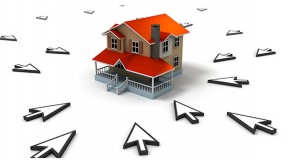Price it Right to Get It Sold
“We can always go down, but we can’t go up.”
If you’re selling your home this statement has probably crossed your lips at least once. But when it comes to setting a pricing strategy for your home, is it a good idea to start high and work your way down? Probably not, as most experts would advise that the best way to increase your odds of a successful sale is to price your home at fair market value. But, as logical as this advice sounds, for many sellers it is still tempting to tack a few percentage points onto the price to “leave room to negotiate”.
You could be setting yourself up for failure if you don’t price it right from the start:
Appraisal problems
Even if you do find a buyer willing to pay an inflated price, 90% of buyers use some kind of financing to pay for their home purchase. If your home won’t appraise for the purchase price the sale will likely fail.
No showings
Today’s home buyers are well educated about the real estate market. They review information about your home online before they ever think about viewing the house in person. If your home is overpriced they won’t bother looking at it, let alone make you an offer.
Selling the competition
Overpricing helps your competition and other properties for sale in your neighborhood. How? You make their lower prices seem like bargains. Nothing is worse than watching your neighbors put up a sold sign.
Stimatized and Stagnation
The longer your home sits on the market, the more likely it is to become stigmatized or stale. Have you ever seen a property that seems to be perpetually for sale? Do you ever wonder – What’s wrong with that house?
Tougher negotiations
Buyers who do view your home may negotiate harder because the home has been on the market for a longer period of time and because it is overpriced compared to the competition.
Lost opportunities
You will lose a percentage of buyers who are outside of your price point. These are buyers who are looking in the price range that the home will eventually sell for but don’t see the home because the price is above their pre-set budget.
One popular myth is that a great marketing plan will overcome a pricing problem. Nope – spending a zillion dollars on advertising, internet ads, and television spots won’t motivate buyers to pay you more than the home is worth. Another myth is the assumption that a buyer will see your home, fall in love, and write you a check so the competition doesn’t matter. Wrong. Buyers don’t look at homes in isolation. Most look at 10-15 homes before making a buying decision. Because of this, setting a competitive price relative to the competition is an essential component to a successful marketing strategy.














